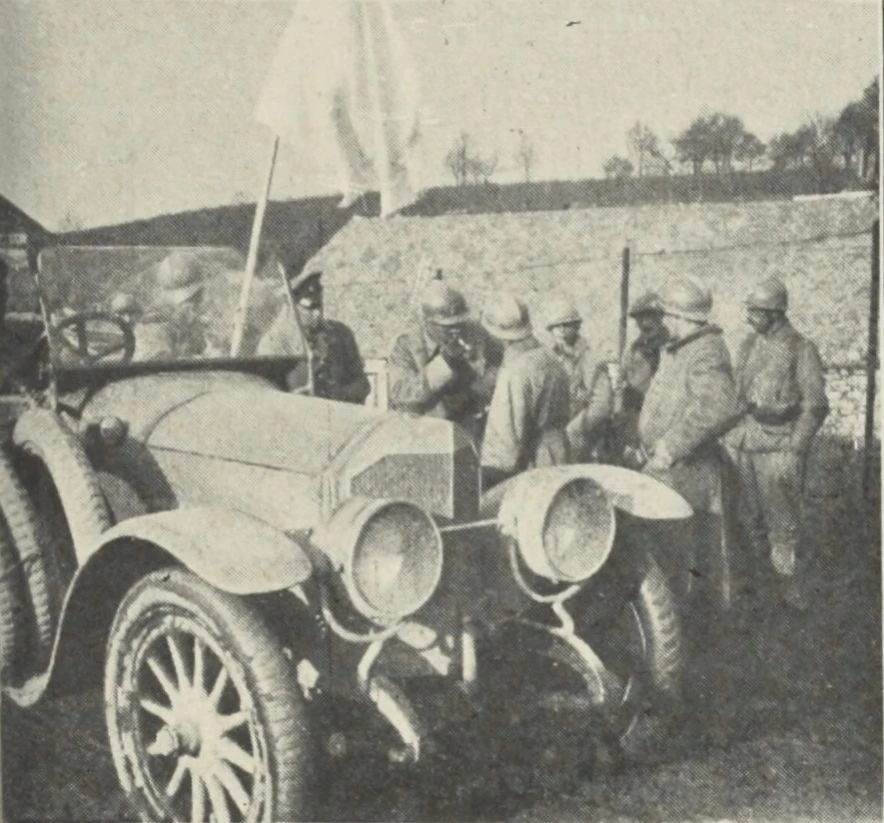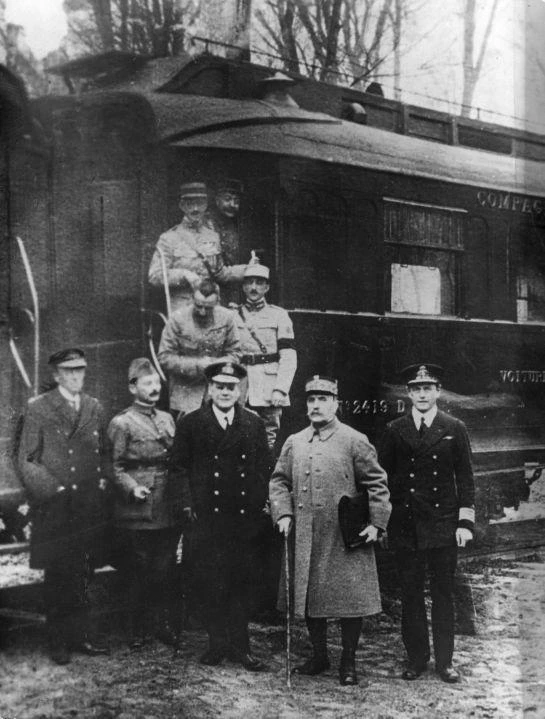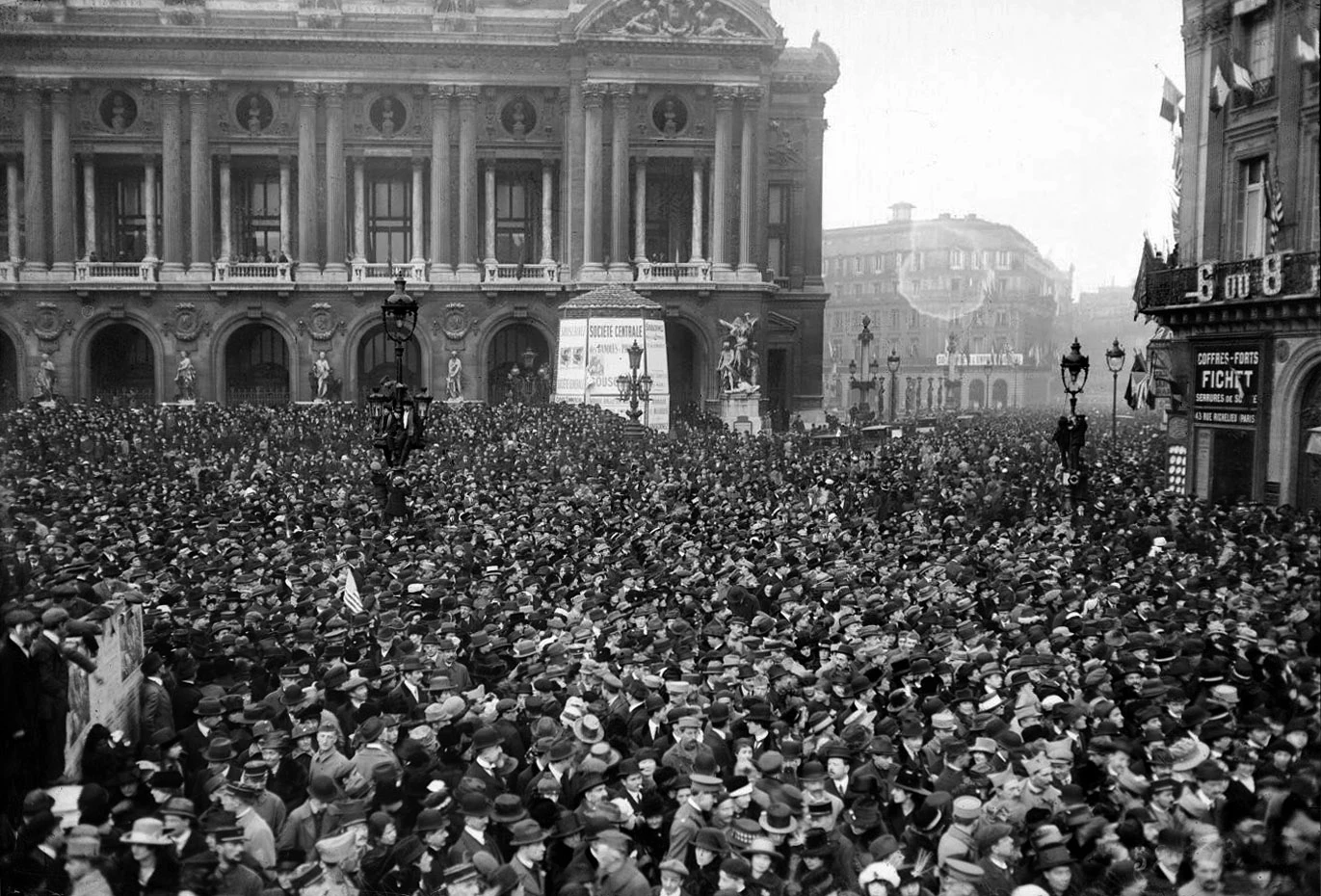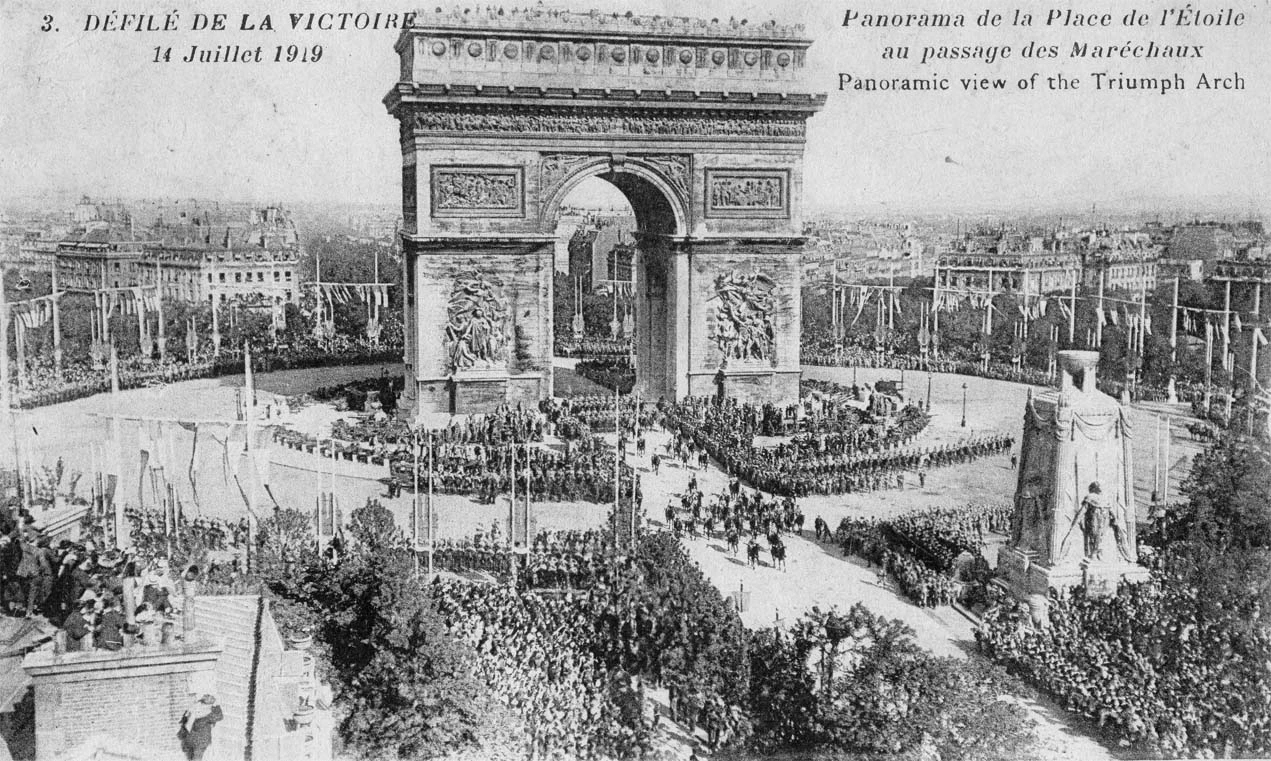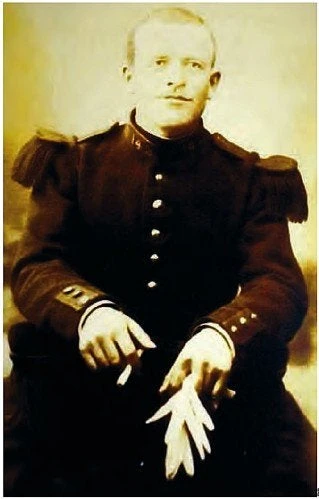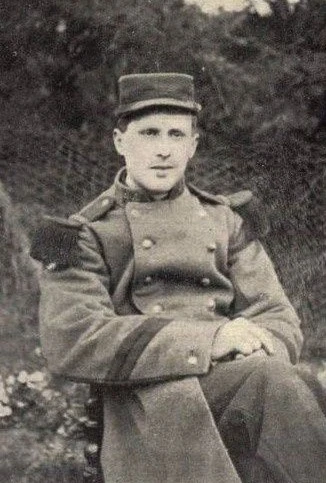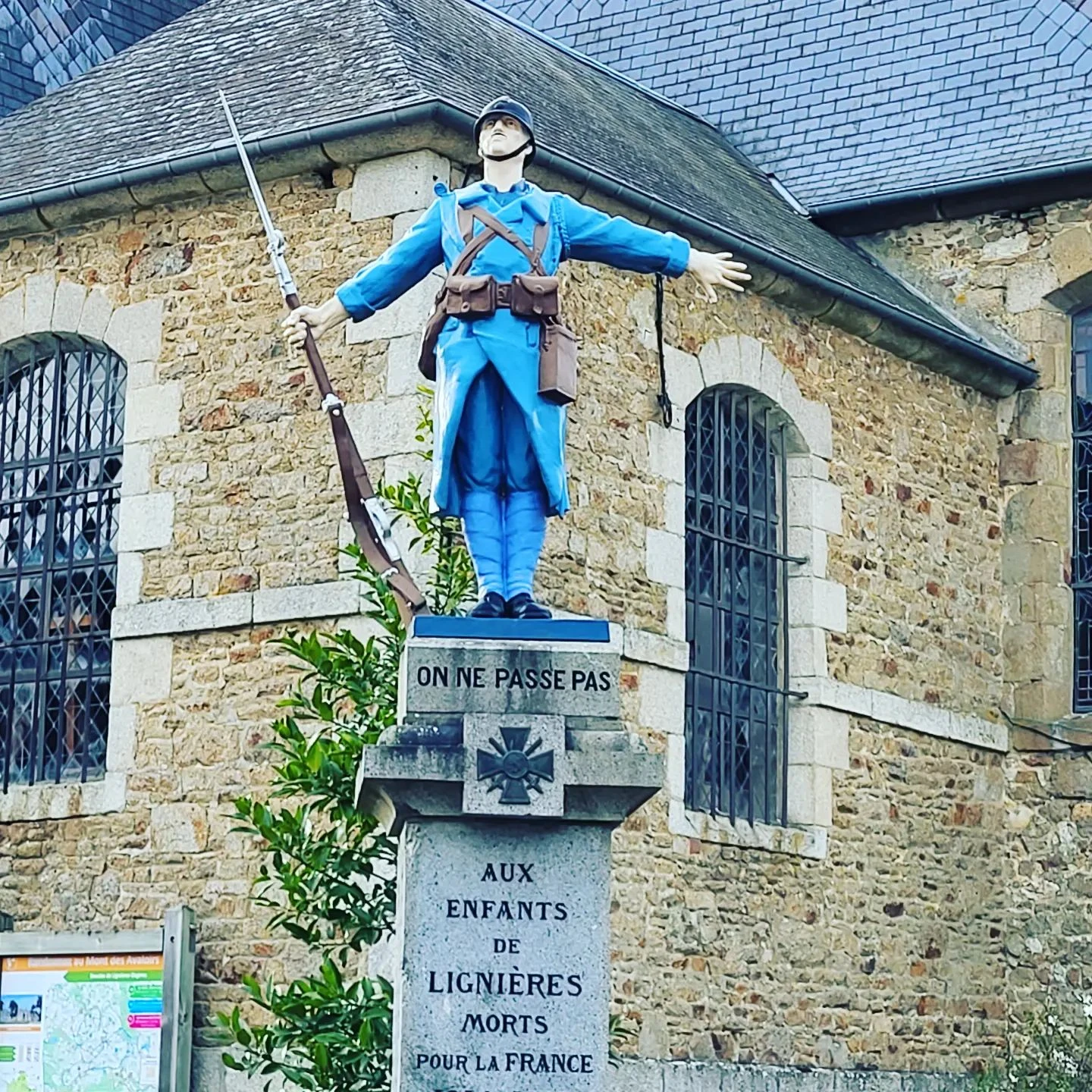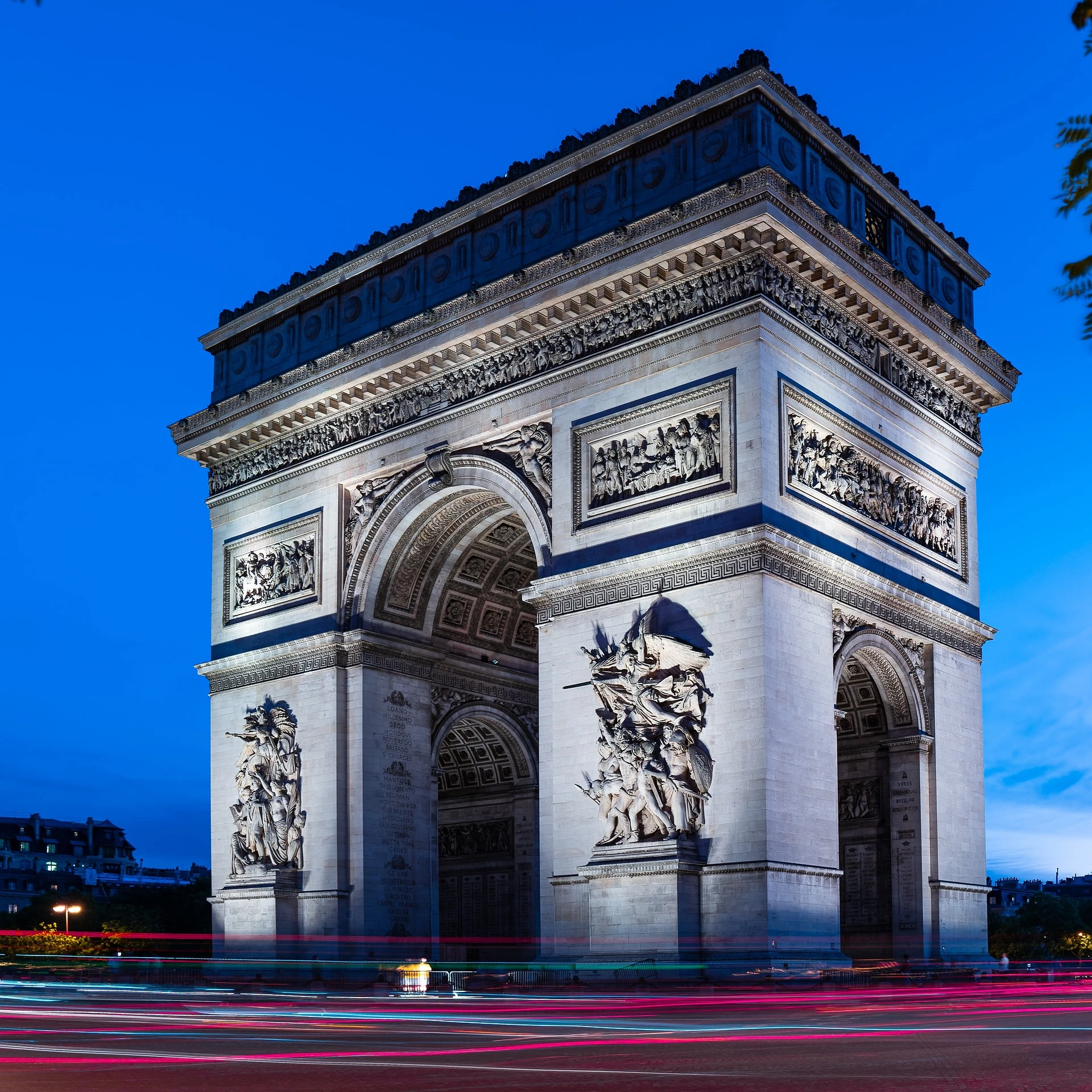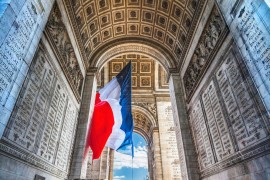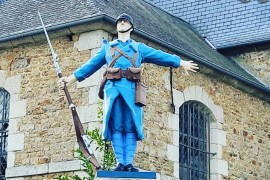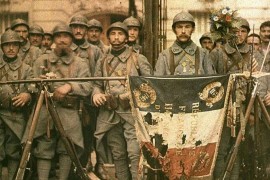November 11: a day of remembrance in France
How it all began: November 5, 1918
The arrival of German emissaries at La Capelle in the Aine a few moments after Corporal Sellier sounded the ceasefire with his bugle. Source monsieurdefrance.com : Wikipedia / Gallica.fr
On that day, November 5, 1918, at the top of the Eiffel Tower , a Morse code message sent from Belgium announced a request for an armistice from the German General Staff. Two days later, on the 7th, the Front opened up in the Aisne, at La Capelle, to allow the 6 cars carrying the German representatives to pass through.For the first time in over 1,500 days, Corporal Pierre SELLIER's bugle sounded the melody of the ceasefire, which is now on display in the Musée de l'Armée at Les Invalides in Paris.The German cars drive through war-torn northern France, before being received by the Allied General Staff under Marshal FOCH, who checks that the soldiers, who have just got out of the car, are indeed asking for an armistice. Yes, we are", they reply. Negotiations are short. On November 11, 1918, at 2:15 a.m., the delegations meet for the last time in a wagon in the forest of Rethondes, not far from Compiègne. The armistice was signed between 5:12 and 5:20 a.m. on November 11, with the end of the fighting set for 11:00 a.m. on the same day: November 11, 1918.
They have just signed the Armistice. Photo taken at Rethondes in the forest of Compiègne. Marshal Foch is in the foreground, second on the right, accompanied by the two British admirals Hope Wemyss. Source : Wikipedia.
November 11, 1918 at 11:00 a.m.
The crowd at the Place de l'Opéra in Paris on November 11, 1918. Photo chosen by monsieurdefrance.com: Gallica.fr
At that very moment, the bugle sounded once again to signal a ceasefire, but this time on the entire front line. The news quickly spread to every town in France and Europe: the First World War had come to an end. For France, it lasted 1,561 days, 52 weeks since 1914. Over 8,000,000 Frenchmen were mobilized.More than 1,400,000 were killed. 300,000 were maimed, some of them disfigured and sadly nicknamed "les gueules cassées" ("broken faces"). Their association was behind the creation of the Loterie Nationale to help finance the care and pensions of these men whose bodies had been destroyed. More than 2,000,000 soldiers were invalided out at a rate of more than 10%. A whole generation was sacrificed.
The victory parade on July 14, 1919. Photo chosen by monsieurdefrance: carte postal via wikipedia.
In Paris, over a million people took to the streets to celebrate victory. But it was much later, on July 14, 1919, that the Victory Parade celebrated the end of the war in Paris, with 1,000 mutilated soldiers at its head, preceding the Allied generals and troops. This was the last military parade to pass under the Arc de Triomphe. 2 years later, in 1921, the tomb of the Unknown Soldier was installed at the heart of the monument. In 1923, the Flame of the Unknown Soldier was lit for the first time. It has been rekindled every evening since.
The last dead Frenchman: Augustin Trébuchon
Augustin TREBUCHON. Last French casualty of the First World War.
On November 11, 1918, the war was still killing. Thousands died that day, even though the date on their death certificate was November 10, because it was considered impossible to die on Victory Day. It seems that the last French soldier to die was Augustin Trébuchon. Born on May 30, 1878 in Lozère, France, Augustin TREBUCHON was a shepherd (and an accomplished accordionist) who was mobilized at the very start of the war, on August 4, 1914. He spent the entire war, from first day to last. He fought in the Marne, the Somme, at Verdun... On November 11, he was at Vrigne-Meuse in the Ardennes along the river when he received a message to deliver to his captain. Soup has been brought forward to 11:30 a.m., and the men need to be warned. TREBUCHON dashes into the trenches, while sporadic firing continues, even though news of the armistice has reached both sides. At 10:55 am on November 11th 1918, a shot rings out and Augustin TREBUCHON, 40, collapses. He died from a bullet to the head, 5 minutes before the end of the war. On the occasion of the centenary of the armistice, in 2018, soldier TREBUCHON was honored by Prime Minister Edouard PHILIPPE at the foot of the Malzieu-Forain war memorial, in Lozère.
1562 days after Jules André Peugeot.
Jules André PEUGEOT, the first casualty of the Great War.
Jules André PEUGEOT, a schoolteacher born in Etupes, Doubs, in 1893, was the first to die in this conflict that was to claim the lives of over 1,400,000 Frenchmen. He ran out in front of a German patrol that had violated the French border, even though war had not yet been officially declared (it would be the following day, August 3, 1914). At Joncheray, in the France-Comté region, 20-year-old German second lieutenant Camille MAYER fired 3 bullets as he approached 5 German soldiers ordering them to stop. The 2nd hit Corporal PEUGEOT. The French retaliate and Camille MAYER is killed. He was the first German casualty of the First World War. Still able to walk, despite being hit in the shoulder by a bullet, he collapsed on reaching a farm.He died at 10.07 a.m. on August 2, 1914. His body, entrusted to his mother, lay for a few hours in his childhood bed in the family home, before being buried with his grandfather in the cemetery on August 4, 1914. He was the first French soldier to perish in a conflict that claimed more than 40,000,000 lives worldwide.
What happens on November 11 in France?
A public holiday since 1922
The law of October 24, 1922 made November 11 a national holiday of remembrance . Since February 28, 2012, November 11 has been dedicated to all those who died for France, so not just those from the First World War, but from all conflicts in which France took part.
Ceremonies every year
Every year on November 11th, the Mayor and staff gather in front of the Monument aux morts. On this day, a wreath of flowers is laid and the names inscribed on the monument are read out . After each name, we say "died for France". Often, in the presence of a brass band, the bell is rung at the beginning and end of the reading. A minute's silence is then observed, followed by the Marseillaise.
The war memorial at Lignières Orgères in Mayenne. Photo chosen by monsieurdefrance.com: Jérôme Prod'homme (c)
In Paris, tradition dictates that the President of the Republic, with a cornflower in his lapel, walks up the Champs-Elysées, stopping first in front of the statue of Georges CLEMENCEAU and paying tribute by laying a tricolor wreath. He then continued up the Champs to the Arc de Triomphe. There, he reviews the troops before bowing to the tomb of the Unknown Soldier, laying a wreath and rekindling the Flame of the Sacred Slab.
The Arc de Triomphe in Paris. Photo chosen by monsieurdefrance.com depositphotos.
FAQ – Understanding November 11
Why is November 11 a public holiday?
Because it marks the signing of the armistice on November 11, 1918, which ended World War I.
What is commemorated today on November 11?
Since 2012, this day has paid tribute to all soldiers who died for France in all conflicts.
Where was the armistice signed?
In a railway carriage in the forest of Rethondes, near Compiègne, north of Paris.
Who was the last French soldier to die?
Private Augustin Trébuchon, killed at 10:55 a.m. on November 11, 1918, five minutes before the official end of the fighting.
What does the President of the Republic do on November 11?
He pays tribute to Clemenceau, reviews the troops, and then rekindles the flame under the Arc de Triomphe.
Why is there a flame under the Arc de Triomphe?
It symbolizes the eternal memory of the soldiers who fell for France. It has been burning continuously since 1923.
How many French people died during the war?
Approximately 1.4 million, and more than 2 million were wounded or maimed.

